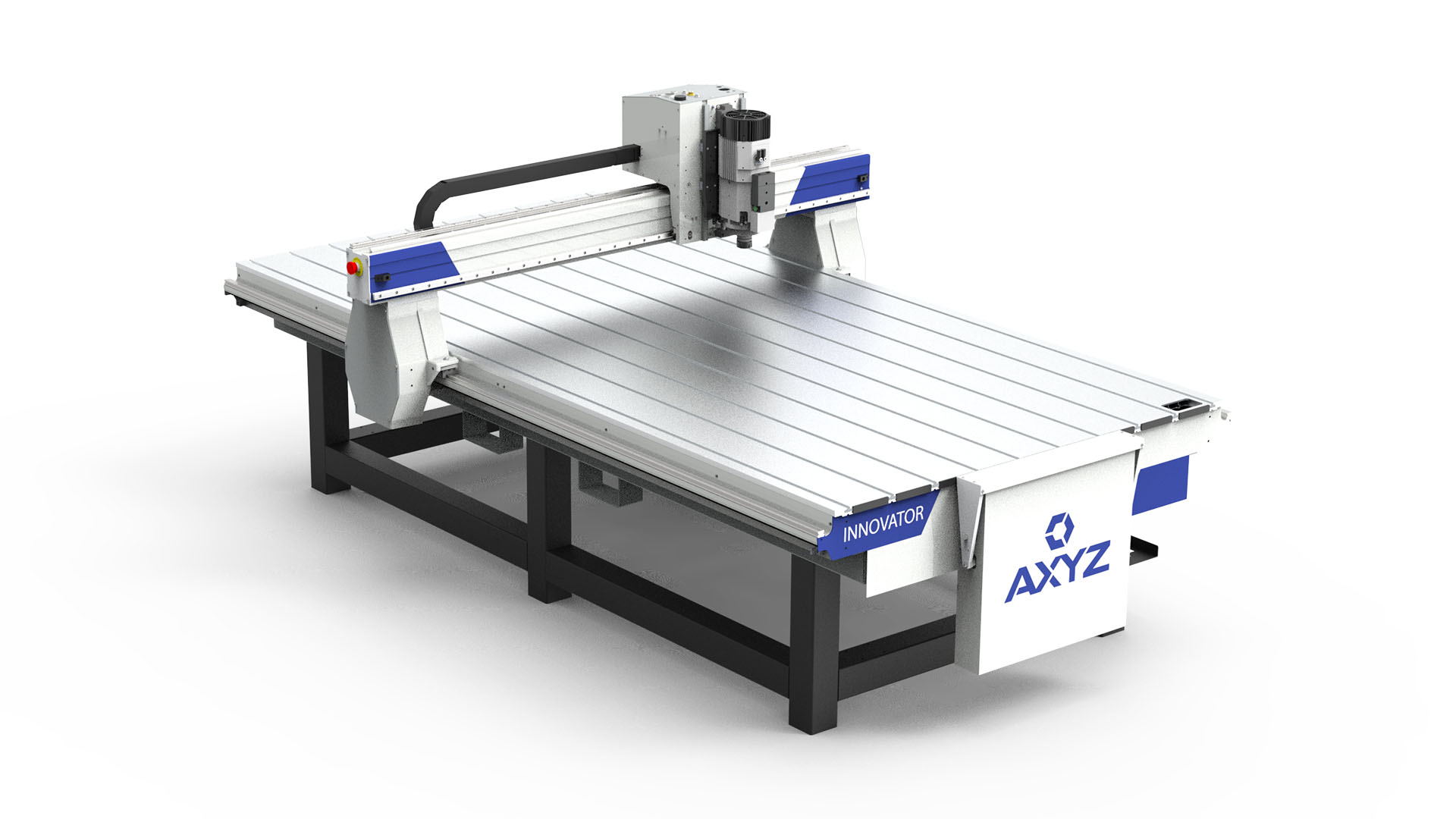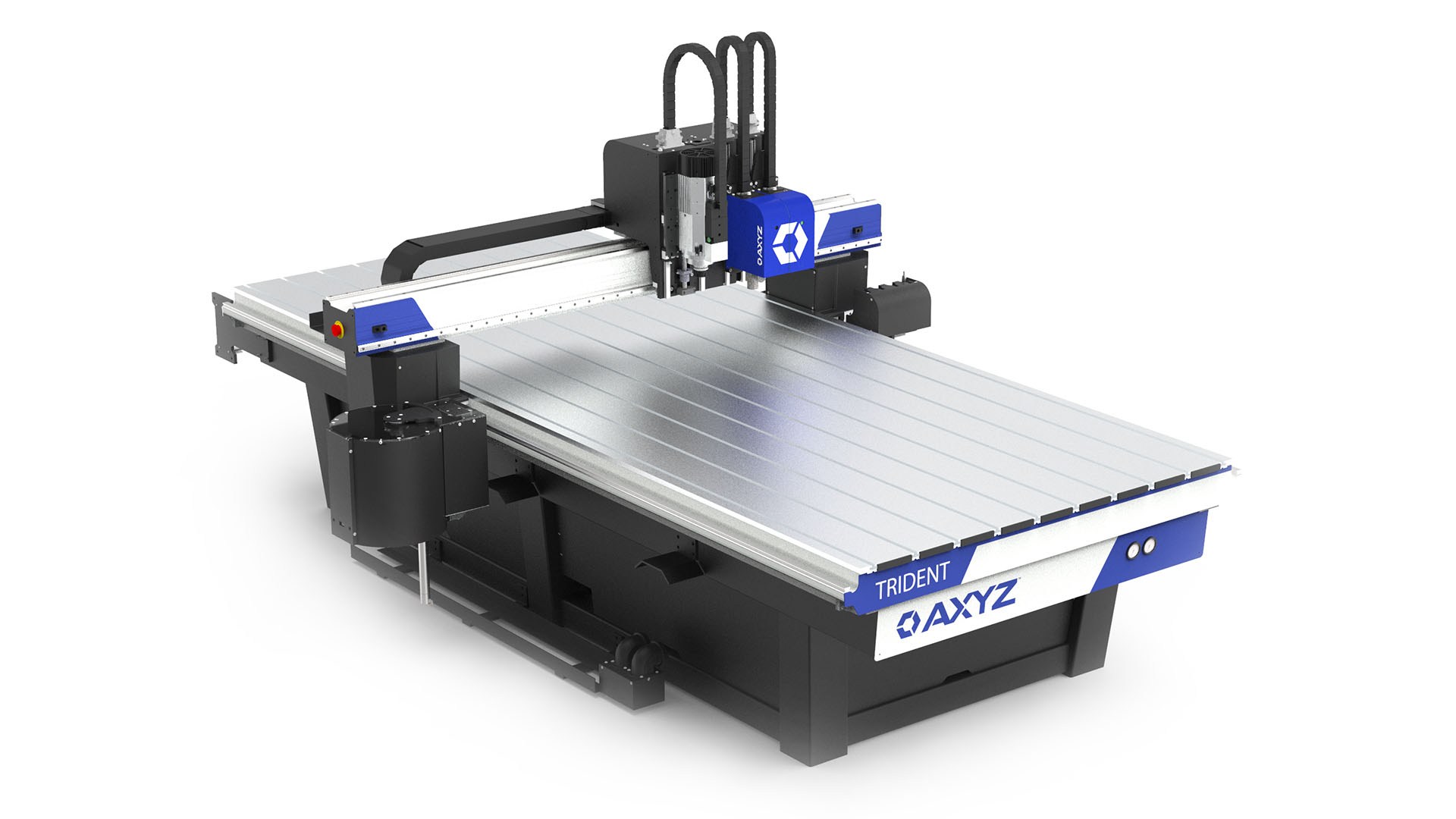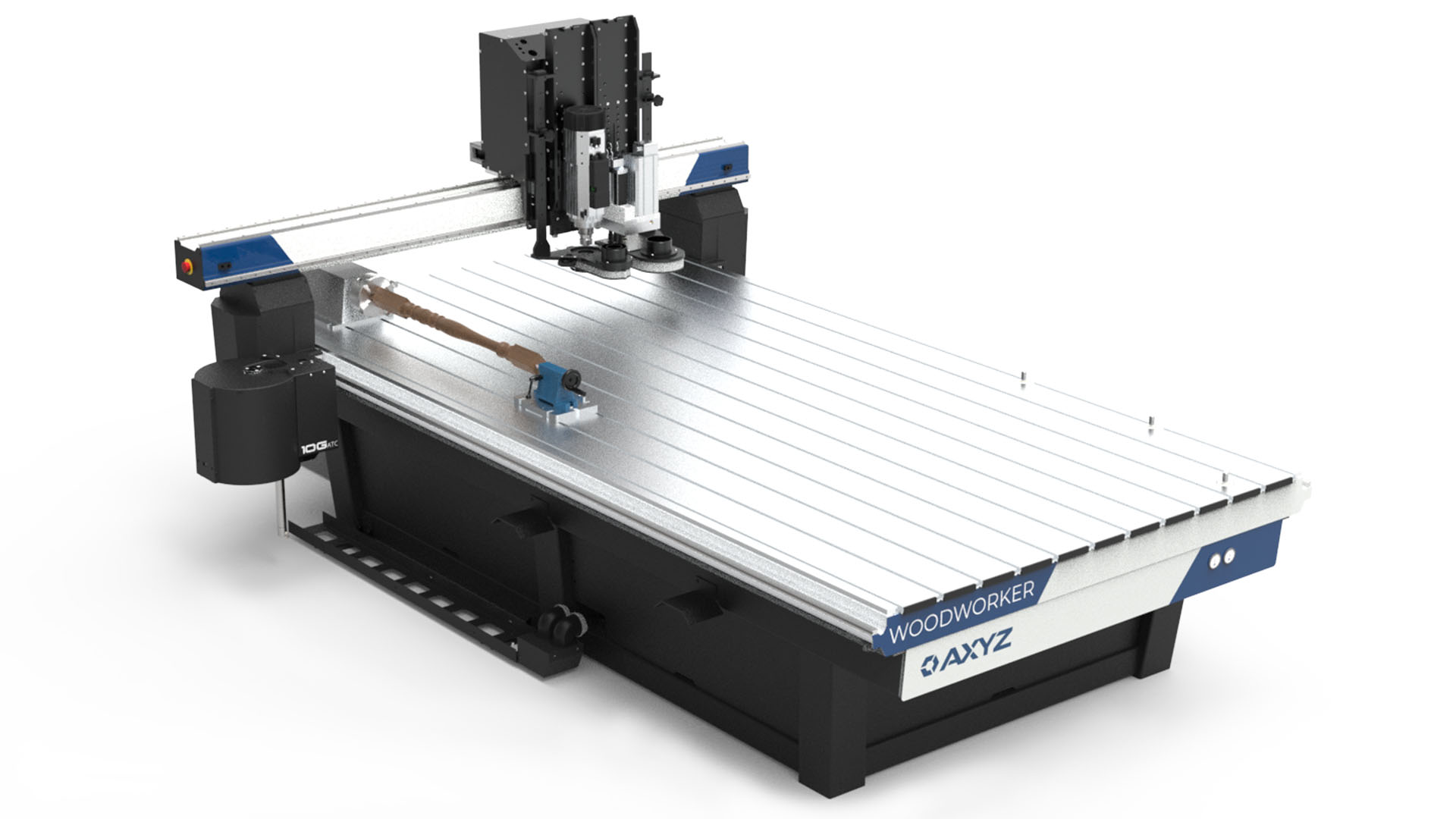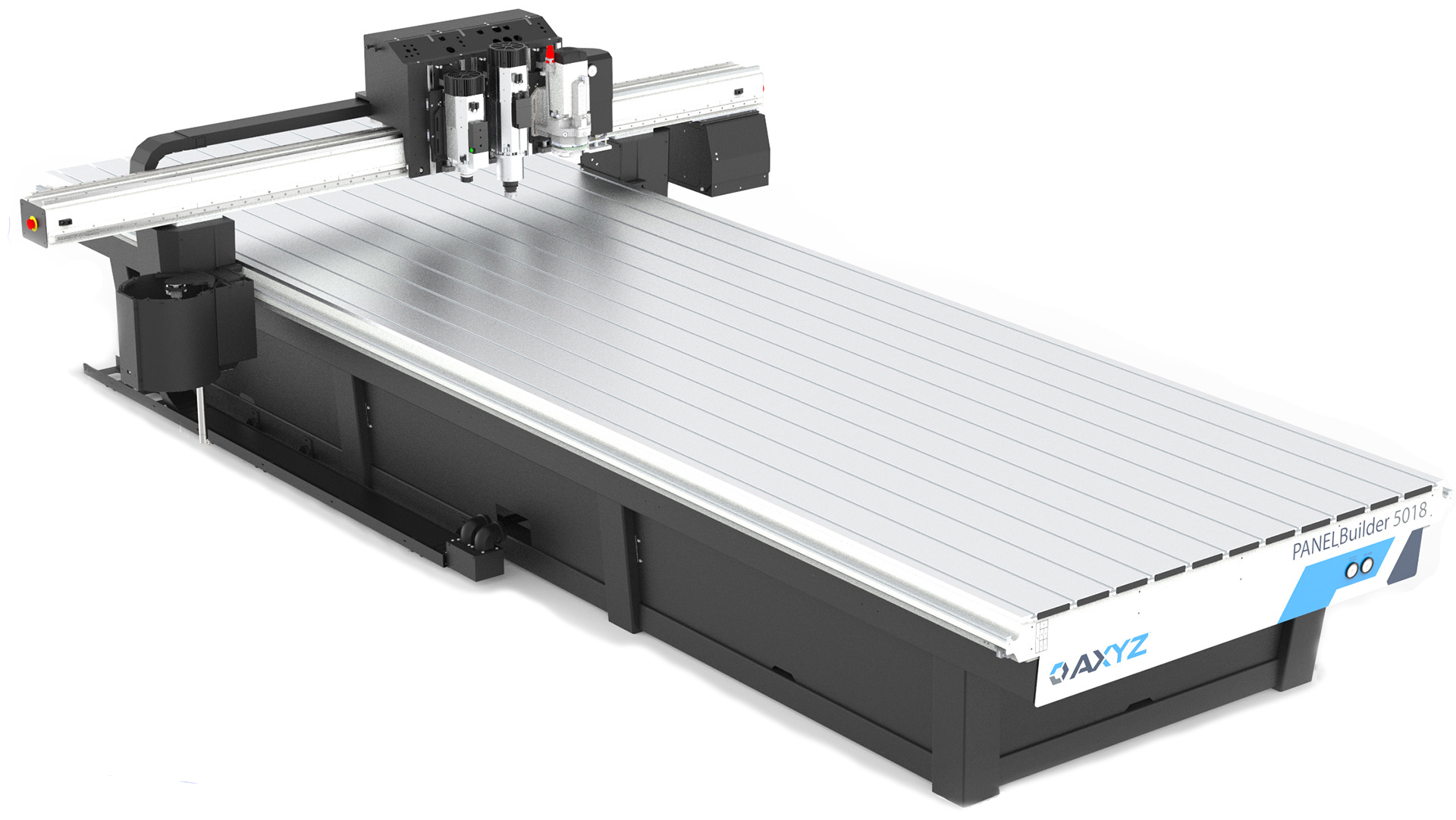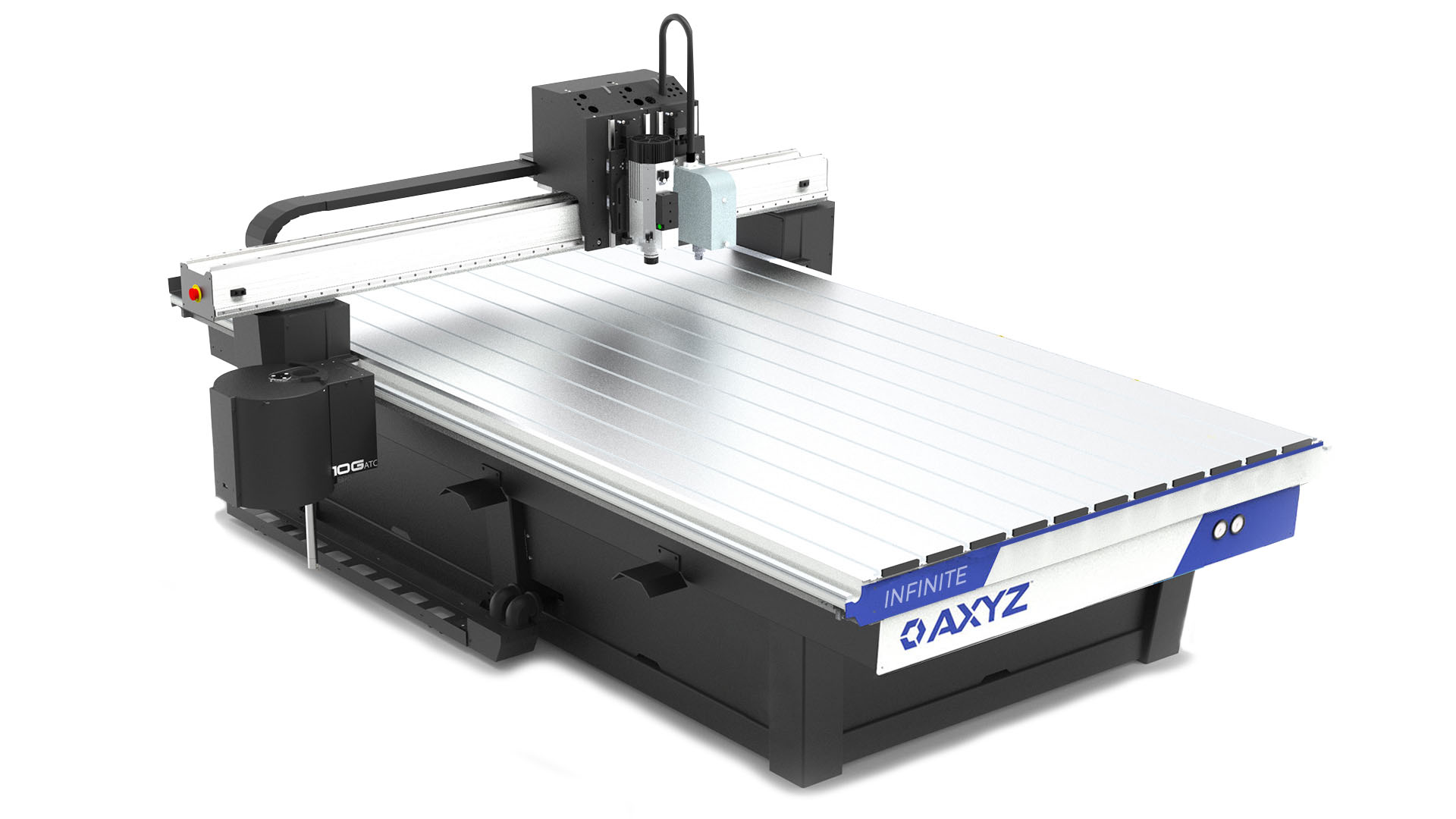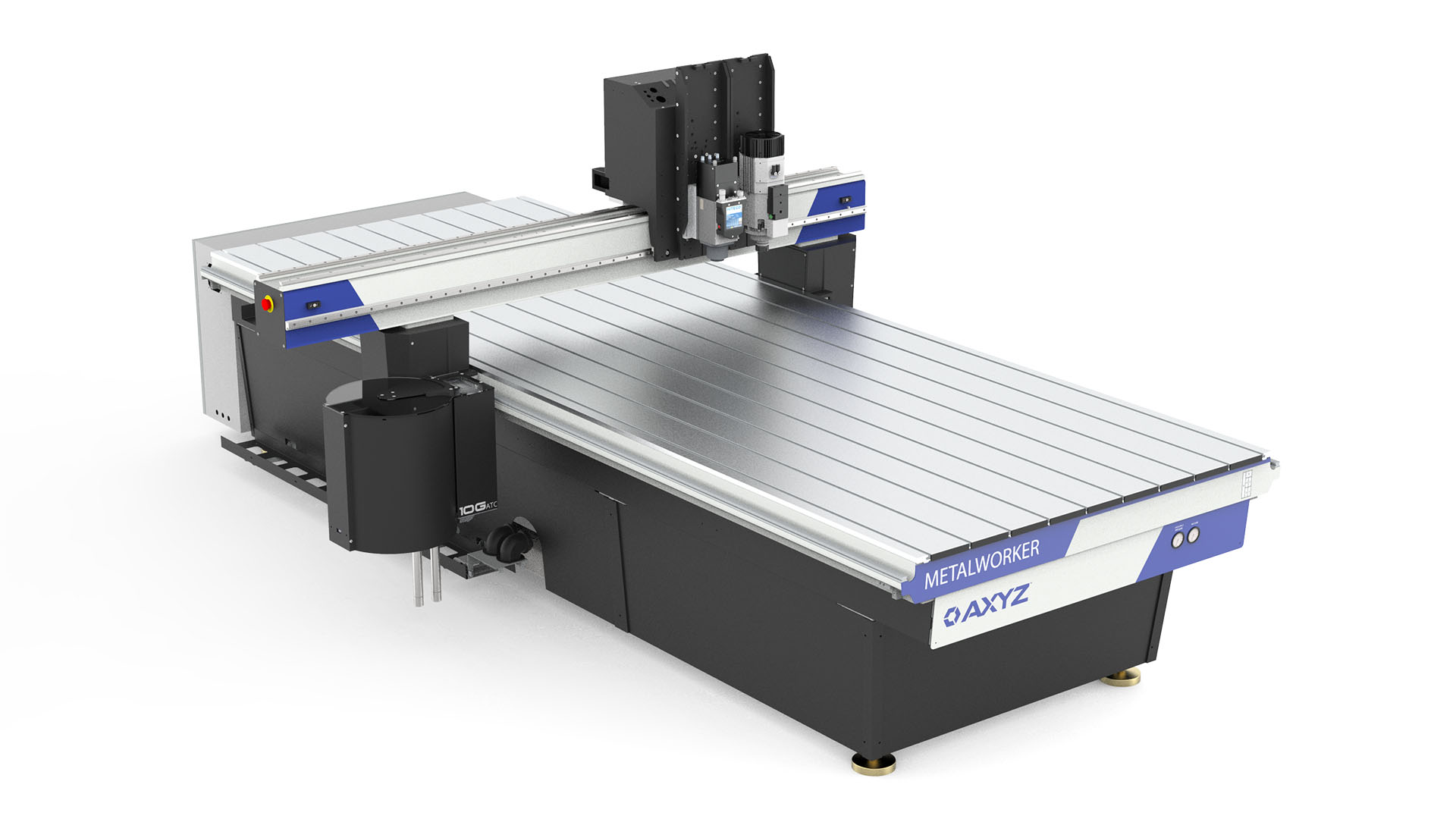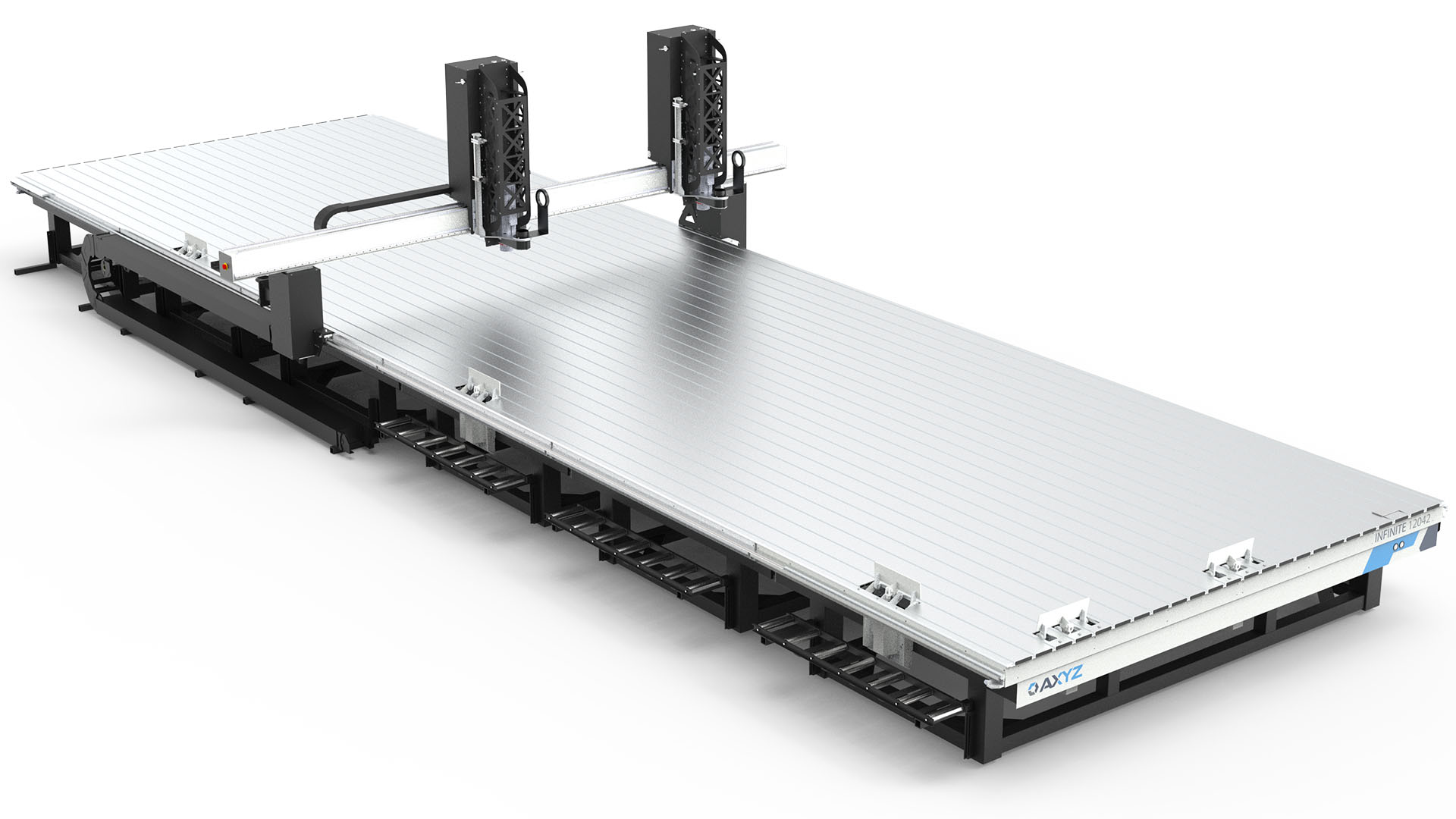Functions
FUNCTION 001 – A2MC IDENTIFICATION
This function will display important communication information for the operator. This function is generally used to get the IP information that has been assigned to the router table. For more information.
FUNCTION 002 – NC FILE VERIFICATION
This function is used to verify an NC file. It will scan through the file and check if the codes are understood and if the file stays within the boundaries of the machine. For more information.
FUNCTION 003 – PREFERENCES
This function allows you to edit some of the often used preferences on the machine: Co-ordinate Display, Units (only on Smart Console), Enable or Disable Soft Limits and Console Position. For more information.
FUNCTION 005 – EXECUTE M CODE
This function allows for the direct execution of valid M-Codes from the operator console. For more information.
FUNCTION 006 – EXECUTE G CODE
This function allows for the direct execution of valid G-Codes from the operator console. For more information.
FUNCTION 007 – RESET SERVO DRIVES
This function only works with servo motor systems, it doesn’t do anything with stepper motor systems. It will reset the servo motors. This function is used to reset the servo motors if they have been crashed into the mechanical stops or into material. For more information.
FUNCTION 009 – ABORT OR DELETE A JOB
This function has several different functions:
- If a job has been paused, this function is used to abort or abandon the job. Once it is aborted then the job can no longer be restarted from where it left off. It can only be started over again.
- In addition, if a job has been paused, it can be restarted on the current shape or a different shape can be selected to be cut.
- If there is no paused job, then this function will be used to delete the current job displayed.
FUNCTION 010 – SET USER XY ORIGIN (G55)
This function sets the current active tool to G55 origin. This is also called User XY Origin. Use function 27 to adjust the Z origin associated with G55. For more information.
FUNCTION 011 – SELECT ORIGIN
This function allows the user to select between six user origins:
- G54 (machine origins that can’t be changed, X=0 Y=0)
- G55 (user set origin, see function 10)
- G56 (A2MC Setup GUI Programmable Origin A)
- G57 (A2MC Setup GUI Programmable Origin B)
- G58(A2MC Setup GUI Programmable Origin C)
- G59(A2MC Setup GUI Programmable Origin D)
FUNCTION 012 – SEEK MACHINE ORIGIN
This function will seek the machine origins:
- First find the each Z origin beginning with Z1, followed by Z2, Z3, and Z4 if applicable.
- Find the X origin. If the machine is set up for automatic squaring it will seek either end of the gantry separately. First X1 (positive Y end) and then X2 (negative Y end).
- Find the Y1 origin and if applicable in dual Y machines the Y2 origin.
FUNCTION 013 – SEEK CURRENT XY ORIGIN
This function will first move the current tool Z axis up to find its origin. Then the machine will move to find the X and Y axis of the current origin. For more information.
FUNCTION 014 – XY ALIGNMENT
This function allows the user to align a job using two registration points. It will both position and rotate the job. For more information.
FUNCTION 016 – SET PARKING POSITION
This function enables and sets the machine’s parking position. If enabled the machine will automatically go to the parking position at the end of job. For more information.
FUNCTION 020 – SET MATERIAL THICKNESS
This function allows you to set the material thickness. It essentially “lifts” the entire NC file in the Z axis.
It is used for two main purposes:
- Normally NC files are created with the Z=0 datum at the machine surface which would be the bottom of the material. However, in some cases the Z=0 datum is at the surface of the machine. In this case function 20 is required to identify where the surface is or how the thick the material is so that the NC file will cut properly.
- The second common purpose is to raise the job above the material in order to do a test run of the job. For example you can set the “thickness” to 2 inches or 50 mm and the job will “cut” in the air so that you can observe how it runs before actually committing your material to it.
FUNCTION 023 – ADJUST TOOL LENGTH
This function is used to make small tool length or tool qualification adjustments. Sometimes when a tool is cutting slightly too deep or slightly too shallow it is more convenient to simply enter in a small adjustment value than to use function 24 or function 25 to re-calibrate the tool completely. For more information.
FUNCTION 024 – MANUAL SET TOOL LENGTH
This function is an alternative to function 25. It is used if the use of function 25 and the F25 sensor is impractical:
- The tool to is too wide or has an odd shape that does not fit on the F25 sensor
- If the F25 sensor is not working this can be used temporarily to keep the machine running.
- Some tools like knife tips and very small tools that are too sensitive might break if using the F25 sensor.
- Oscillating knives need to be on when setting the length so cannot use function 25.
- Knife heads usually use a cutting mat on top of the waste board, therefore adjusting the tool length. Function 24 will properly compensate for this.
Knife heads, especially are often inconvenient to use the function 25 sensor. Oscillating knives in particular do not function well with the function 25 sensor so function 24 should be used instead.
FUNCTION 025 – SET TOOL HEIGHT
This function is used to set the tool height of a specified tool. All tools must have a valid and correct tool height in order to properly run a job. An incorrect tool height can damage the machine by causing the tool to plunge into the machine bed! For more information.
FUNCTION 026 – SET ATC TOOL HEIGHTS
This function will automatically measure all the tool heights of all the valid tools in the automatic tool changer. For more information.
FUNCTION 027 – SET USER (G55) Z ORIGIN
This function is used to set the User Z Origin. This User Z Origin is used when the current origin is the user origin (also referred to as the G55 origin). See also Function 10 which sets the User XY Origin. For more information.
FUNCTION 028 – SET AND PLANE WASTE BOARD
This function is used to set a new waste board and plane an existing waste board. It defines the waste board offset shown below which is the offset difference between the tool height sensor and the surface of the waste board. For more information.
FUNCTION 030 – EDIT TOOL
This function is used to edit various tool parameters:
- Maximum Spindle Speed
- Maximum Feedspeed
- Whether or not to lift the tool on pause.
- Enable or disable auto mister so the mister will come on automatically for that tool.
- Enable or disable air assist if that feature is fitted on the machine.
It will only work on tools already mapped by the A2MC Configuration utility.
FUNCTION 031 – CHANGE ACTIVE TOOL
This function is used to change the active tool to the one specified in the function. All tools must have a valid and correct tool height set up by Function 31 in order to properly run a job. An incorrect tool height can damage the machine by causing the tool to plunge into the machine bed! For more information.
FUNCTION 032 – LOAD ATC TOOL
This function should be used to load or unload the 21G or Rotary tool changer. Since tool numbers are routinely not mapped one to one with the index numbers of the tool changer it is very risky to load the tools directly into the tool changer. Function 32 uses to the tool map to ensure the correct index is presented for loading the tool. For more information.
FUNCTION 034 – UNLOAD SPINDLES
This function should be used to unload the spindles. This is normally done at the end of the day in order that the spindles are empty. Having tools clamped in the spindles while not in use will prematurely wear out the springs in the spindle tool clamps. For more information.
FUNCTION 035 – DUAL Y SEPARATION
This function will only work on dual Y (sometimes called dual carriage systems). It simply allows you to separate the carriages by a programmed distance.
Enter function 35 and you will be prompted to enter in a separation distance. Enter in the desired distance and press enter. The carriages will move to the programmed separation.
If the carriages do not move an error will be displayed usually indicating the programmed separation is cannot be done because it is too small and the carriages cannot go that close, or too large and the table is not wide enough.
FUNCTION 040 – JOB TIME
This function will display the length of time that the last job took to run. It is used to confirm process times and quotations. For more information.
FUNCTION 041 – USER FEED SPEED
(Old AMC function 1)
This function allows the user to set a default feed speed. The default feed speed is active for:
- Other job productivity functions such as functions 46 and 47.
- It is the modal feed speed at the start of any NC job.
- It sets an up a limit on the feed speeds of tools inside of NC jobs.
FUNCTION 042 – SPINDLE RPM OR TANGENTIAL ANGLE CONTROL
This function works differently depending if the current tool is a spindle or either a tangential or oscillating knife.
If the active tool is a spindle then this function enables the operator to turn on and control the RPM of the active tool. If it is either a tangential or oscillating knife then this function allows the operator to set the knife tangential angle.
FUNCTION 043 – JOB REPEAT
This function sets the current job to repeat a specified number of times. For more information.
FUNCTION 045 – USER PLUNGE SPEED
This function allows the user to set a default plunge (-Z axis feed speed). The default plunge speed is active for:
- Other job productivity functions such as functions 46 and 47.
- It sets an up a limit on the plunge speeds of tools inside of NC jobs.
FUNCTION 046 – MEASURED MOVE
This function allows the user to program a traverse move or a cut move. For more information.
FUNCTION 047 – CUT A RECTANGLE
This function allows the user to cut a rectangle of a specified size. For more information.
FUNCTION 050 – VACUUM AND DUST COLLECTOR CONTROL
This function enables the operator to turn the vacuum and dust collector on and off as well program the automatic functionality of this equipment. For more information.
FUNCTION 051 – DIGITIZING
The digitizing feature in the A2MC is used to program templates into the A2MC controller. It will create both an NC formatted file and a DXF formatted file. Either one can be then copied from the A2MC controller back into a CAD or CAM software package for further editing. For more information.
FUNCTION 052 – PLASMA OPTION MANUAL
AXYZ machines can be fitted with a plasma cutting option. This video will describe how it works and show you how to properly and safely operate the AXYZ plasma system. For more information.
FUNCTION 054 – SAFETY INTERLOCK
If a safety interlock system such as a light curtain, pressure mat, or interlock access door is installed with the A2MC system function 54 allows the user to set it up. For more information.
FUNCTION 055 – USER ACM PANEL
This function is designed to enable the machine user to create and cut simple rectangular ACM panels. The panels can be any size but must rectangular. For more information.
FUNCTION 056 – TOOL COMPENSATION G40, G41, G42
This set of G codes allows for active tool compensation or tool wear compensation. Generally the CAD or CAM software used to generate a tool path also generates the tool offset to account for the diameter of the tooling. However, in some applications the tool “wears” and the diameter gets smaller. It’s very inconvenient to have to re-generate the tool paths every time the dimensions go out of spec caused by tool wear. G40, G41, and G42 are designed to enable the operator to adjust for tool wear right down on the machine. For more information.
FUNCTION 059 – ENABLE AUTO COMPENSATION
This function is used to set a tool compensation for NC files that do not normally generate tool compensation commands like G41 and G42. When enabled this function will initialize all jobs to either a G40, G41, or G42 compensation. For more information.
FUNCTION 067 – KNIFE OVERCUT AND UNDERCUT COMPENSATION
Function 67 enables you to compensate for the undercut and overcut to avoid damaging the job. Simply select function 67 and enter in the trailing and leading offset values required to eliminate the over and under cuts. For more information.
FUNCTION 084 – TOOLPATH DSA FILE SETTINGS
The A2MC can interpret DSA files generated by Toolpath. DSA files manage the Z dimensions differently than NC files so function 84 is used to:
- Set “Lift Bottom” which is the lower Z limit of a job. In two dimensional files this will be the Z cutting depth.
- Set “Lift Top” which is the upper Z limit and is the height at which the machine will go to traverse between shapes. In NC files this is the equivalent to the G0Z value.
- Set “Material Surface”. DSA files and Toolpath use the material surface as the Z reference instead of the machine surface which is usual in NC files. 3D and 21⁄2 D files require that the material surface is set using function 84 prior to running a DSA file.
FUNCTION 801 – SETTING A STATIC IP ADDRESS
Sometimes it is preferable to set a static IP address rather than leaving it dynamic. Generally it is recommended that the A2MC serial number (device name) is used to reference the controller rather than the IP address. However, some network routers cannot reference the device names quickly enough or not at all. In these cases setting a static IP is the best way to go. For more information.
FUNCTION 810 – SETTING THE ATC
This is a factory function that is used to test and set up tool changers. It works with either the 21G or Rotary tool changer. For more information.
FUNCTION 821 – SETTING THE SURFACE SENSOR (F25 SENSOR)
This is a factory function that is used to set up the surface sensor. This is also called the F25 sensor. For more information.
FUNCTION 822 – SETTING UP TANGENTIAL KNIVES
This is a factory function that is used to set up operating parameters for either tangential or oscillating knives. These parameters can be set up in the A2MC Configuration Utility as well as using function 822. For more information.
FUNCTION 824 – SETTING UP INVERTERS
This is a factory function that is used to set up spindle inverters. For more information.
FUNCTION 826 – SETTING UP TOOL TYPE “TAPPER”
The A2MC is capable of using the spindle and tool changer for tapping holes. Holes can be either tapped through or tapped “blind”, meaning that the hole is not through the material. For more information.
FUNCTION 834 – FIRE STUD WELDER
Function 834 will test fire a stud using the stud welding system. Simply make sure that the stud welder is on and the bowl feeder has sent a stud through to the stud welding head. Enter Function 834 and it will operate. This function will only operate if a Stud Welder Modbus board is installed. For more information.
FUNCTION 840 – READ AND WRITE MODBUS NETWORK
This function is used to directly read and write to the machine’s modbus network. Most devices on the machine are controlled by modbus controllers that are all connected to the modbus network. These include carriage boards, ATC controller boards, inverters and numerous other device controllers. For more information.
FUNCTION 860 – SERVO DRIVE CONTROLS
This function will only work if servo drives have been installed on the machine. If there are no servo drives the machine will display an error 756.
This function has a number of sub functions which means that there are separate operations for Function 860.1, 860.2, and so on. These will be all described separately.
FUNCTION 090, 091, 092, 093 – “A” AXIS TUTORIAL
This tutorial includes instructions on:
- Function 90
- Function 91
- Function 92
- Function 93
The A2MC controller and AXYZ machines can support an “A” Axis. The “A” axis is defined to be a rotary axis with the axis of rotation parallel to the X axis of the machine. This axis is generally used to operate a lathe such that cylindrical operations can be handled by the machine. For more information.

